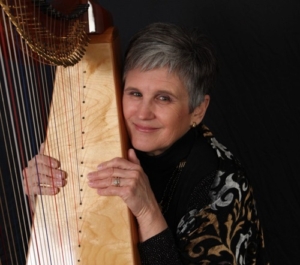Music offers Healing and Comfort
Homeland Hospice offers patients music for healing and comfort
 Human beings don’t simply enjoy music. Our minds and bodies need and thrive on it. Sound and vibration stimulate every region of the brain. Music can heal and comfort. It can even free the soul.
Human beings don’t simply enjoy music. Our minds and bodies need and thrive on it. Sound and vibration stimulate every region of the brain. Music can heal and comfort. It can even free the soul.
Homeland Hospice certified healthcare musician Cass Jendzurski has experienced the power of sound, music and vibration in her work with hospice patients and their families, as she sings and plays her harp, autoharp and voice.
“It is more than just singing a song,” Jendzurski says of her therapeutic music services, which are part of the offerings of Homeland Hospice. “It has enhanced what we do as a hospice. Whether people are in pain, lonely or depressed, I have learned how to apply music to help people in certain situations.”
So what is therapeutic music?
“It is the use of sound and vibration to create a healing environment,” Jendzurski explains. “It combines the principles of the science of sound with the intuition of a musician who has been trained to hear, see, feel and sense what is musically best for an individual.”
Helping with pain
Jendzurski says the results she sees with patients demonstrate the beauty and power of therapeutic music.
“People intrinsically know that music is good for us. It has been used to uplift the spirit and heal the body. It helps us with pain. It’s good for our mind. Music allows people to go to a place where they can shed that pain.’’
The treatment has a scientific foundation.
“Studies can see the effect of music on the brain,” says Jendzurski, relating some of the knowledge gained in becoming a certified healthcare musician. “The brain becomes alive, activated. Music lights up our brain. We are engaged in the processing of music. This releases hormones and chemicals, positively affecting the other organs.”
Jendzurski favors a quote from the philosopher Plato: “Music is a moral law. It gives soul to the universe, wings to the mind, flight to the imagination, a charm to sadness, gaiety and life to everything. It is the essence of order and lends to all that is good and just and beautiful.”
Naming that tune for healing
Homeland Hospice patients and their families can request therapeutic music at any time during their hospice journey. Jendzurski enjoys meeting people and learning about the music they love. She can play virtually any style and is open to requests.
“I’ve never worked with anyone who didn’t benefit from the music therapy,’’ Jendzurski says. “I’m able to see most of my patients for at least a few months. By the time they reach the final stage of life, I know the music they love and the music they have responded to.”
For Jendzurski, who once played for large gatherings in professional settings, there is no better audience than a patient who is uplifted by her singing and harp playing.
“I looked at the talent I was given and thought, ‘Maybe there will be more joy if I am singing to one person who is in need,’ ” says Jendzurski. Separate from her hospice work, she launched an all-volunteer music ministry, Songs for the Journey, in Lancaster.
“I love what I do,” she says. “I find joy in knowing it’s where I am meant to be in life.”
Music to ease a patient’s final days
Perhaps the most mysterious of all the wonders of therapeutic music is the beautiful release that can occur at what Jendzurski calls the moment of transition. She remains on-call around the clock to each of her therapeutic music patients at Homeland Hospice. When the end is near, Jendzurski and her music will be there, if requested.
“In those times, the music takes on a formless quality,” she says.
“With music for transition, you really take out rhythm,” Jendzurski explains. “Someone trying to leave this life, they really pull away from rhythm. So the music takes on a totally different feel.”
Family members notice this, too.
“Time and time again, I have had people say that the music was just so freeing,” Jendzurski recounts. “It is always the same word. ‘Freeing.’ It was freeing for them, the family. It is freeing for me. It imparts the same feeling to the loved one who is dying. It is OK to let go. It is OK to leave. You have to give them permission to go.”
For Jendzurski, who has provided music for hospice patients for more than 14 years, every musical session is a transformative experience for everyone involved.
“You are trained what music to use, but so much of what I do is intuition,” she says. “It is sensing what is going to help this person musically. When you see that change happen for that patient, what joy, what joy! I can’t put into words what that is like.”
But she can set it to music.


